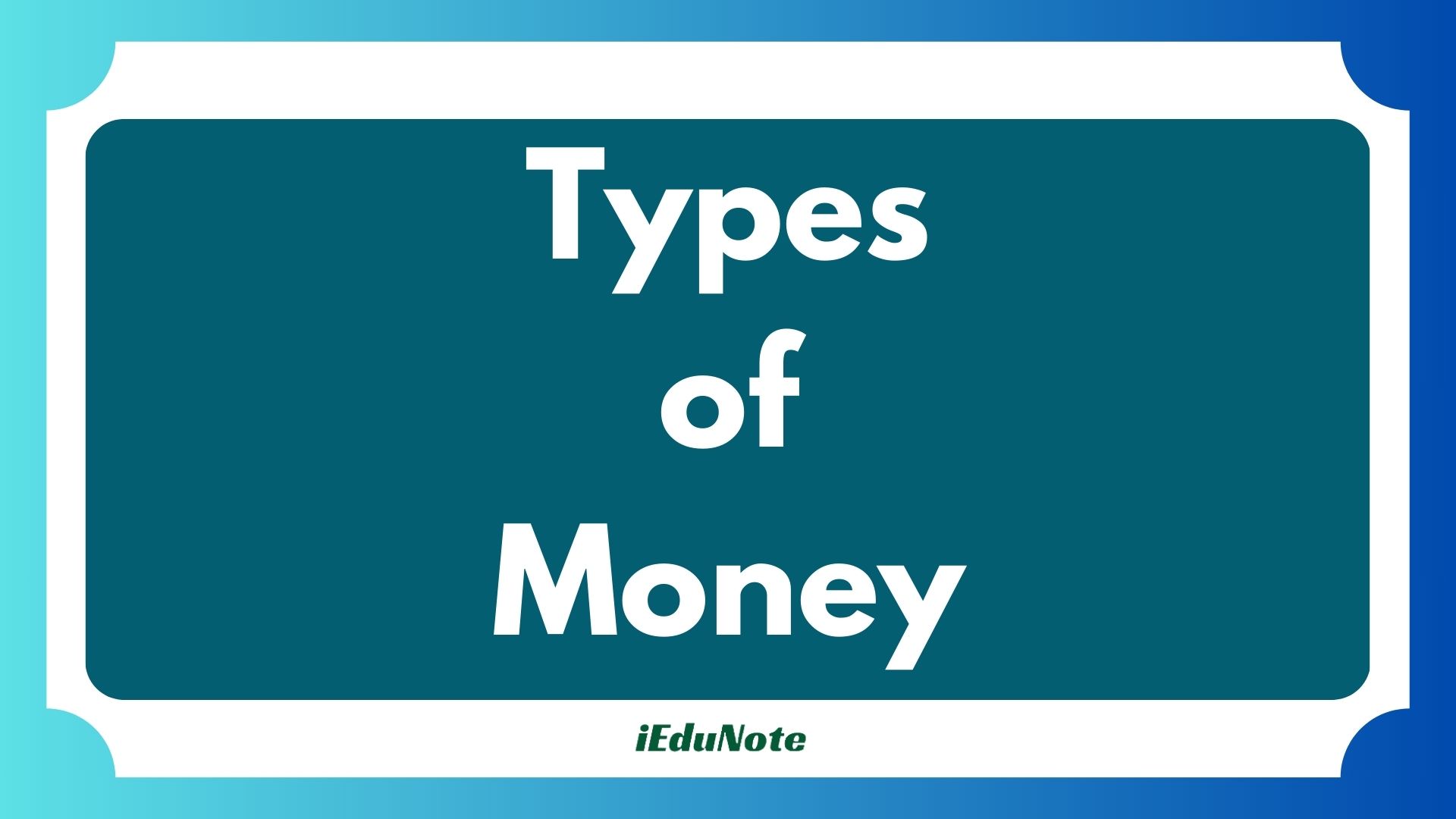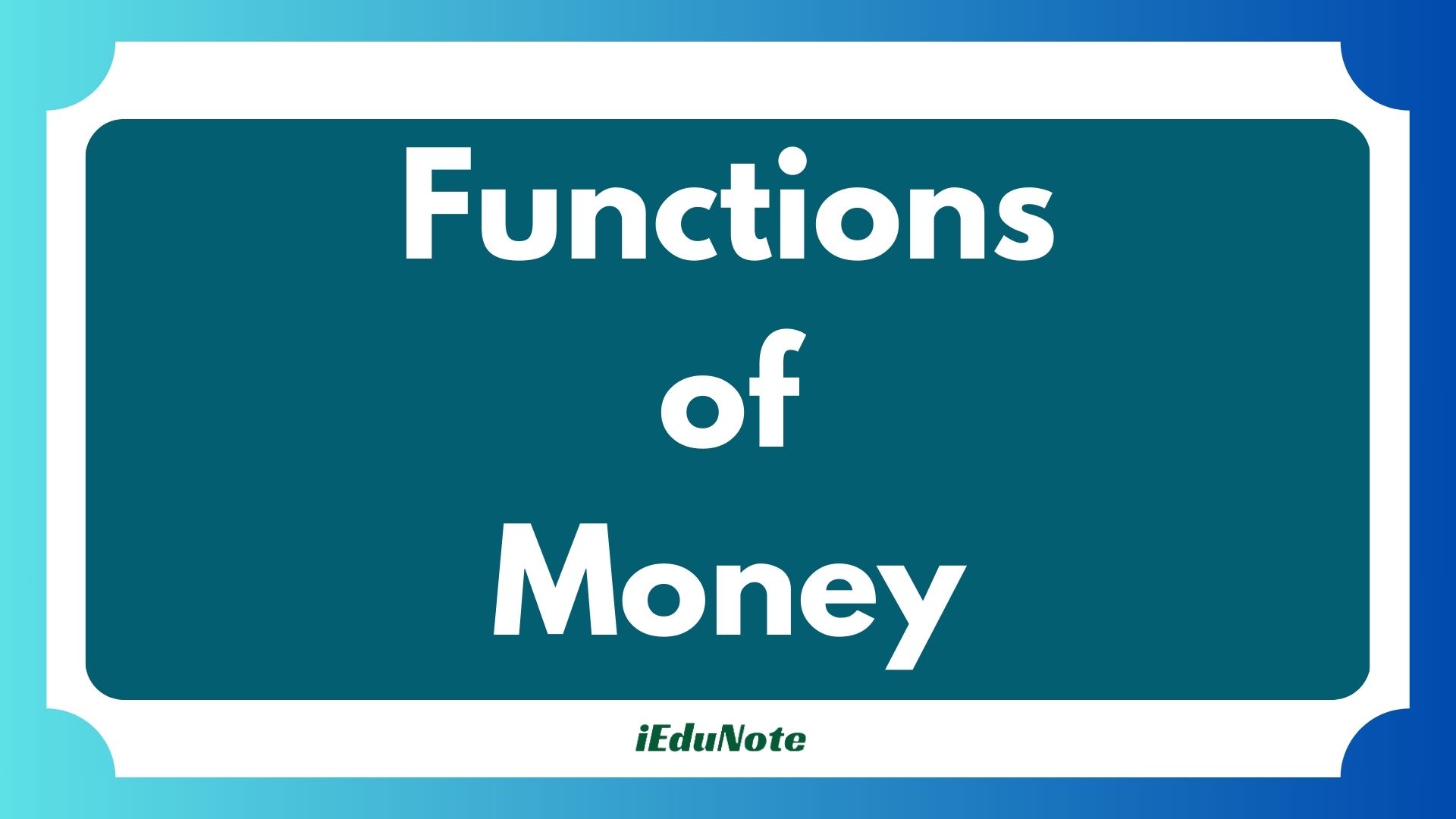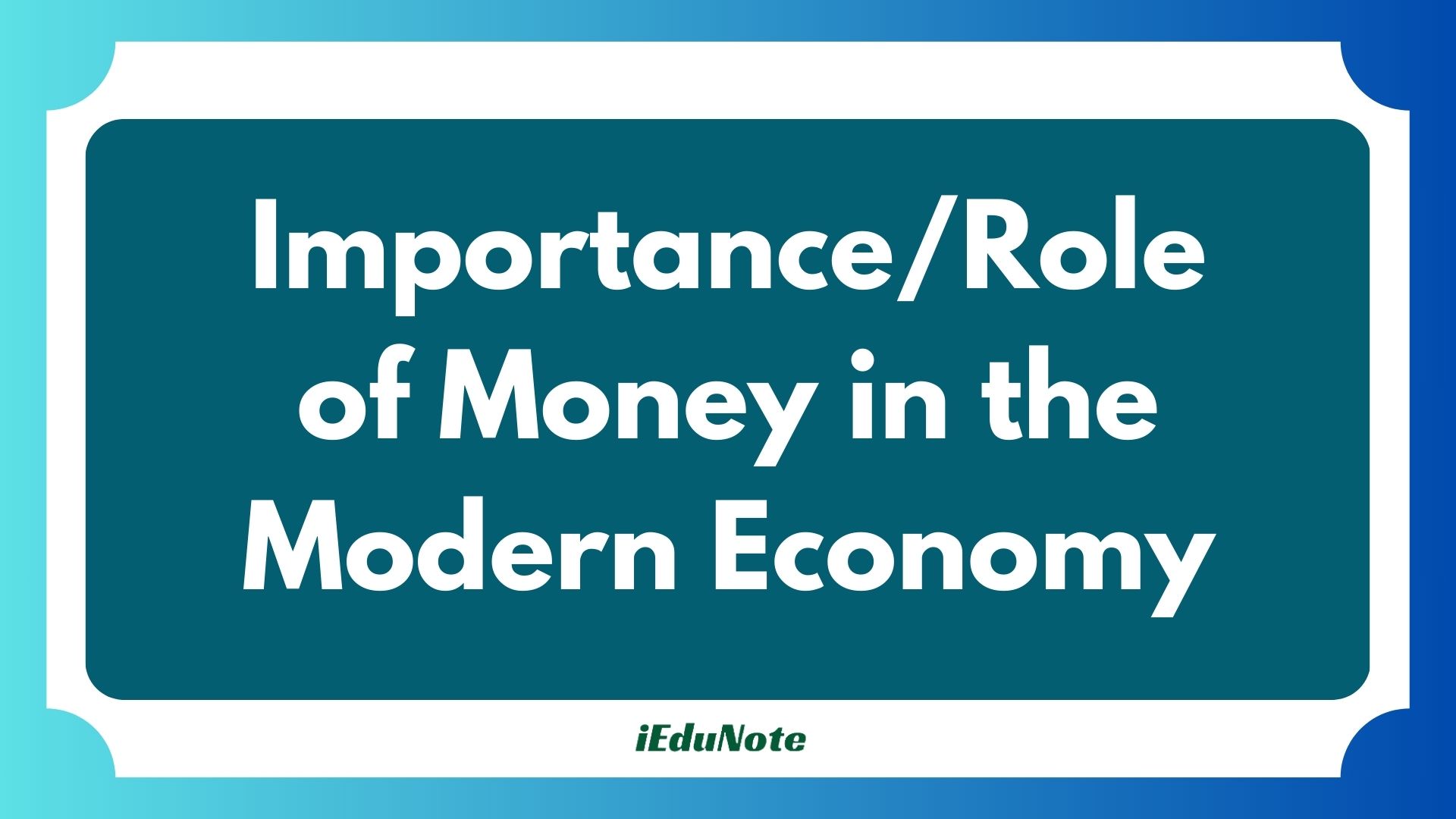Money is a thing that is widely accepted in all payments and obligations. According to economist Crowther, “Money is widely accepted as a medium of exchange and which acts as a scale of value standard bearer of savings.” According to Sayers, “The thing which is widely accepted for settlement of transactions is termed as money.”
Economist Coley says “Money is the thing which is generally accepted by all in transactions or repayment of credit.” According to economist Walker, “Money is what money does.”
Types of Money

Different types of currency are available in different countries. This is discussed below:
Money of Account
This type of money is the name of the currency of a country by which the account is maintained in that country or all transactions are maintained. For example, the money of the account of Bangladesh is Taka; similarly, the money of the account of India is Rupee.
Actual Money
The actual money of a country is the paper, notes, and coins by which the daily transactions are performed. For example, 10$, 20$, 50$, 100$, etc. notes by which the daily transactions within the country are performed.
Paper Money
Paper money is those paper notes which are issued by the government of the country or on behalf of the government, the central bank issues the money notes is the currency of the country. Such as 2 $, 5 $, 10 $, 50 $, 100 $, 500 $, 1000 $ valued paper money issued for market.
Metallic Currency
Gold, Silver, etc. metallic coins are sometimes issued for transactions which are termed as metallic currency. For example, 25 cent, 50 cent, 1$ valued metallic coins are termed as metallic currency.
Legal Money
The currency which is recognized through government acts and individuals are bound to accept by law is the legal money. For example, 1 $, 2 $, 5 $, 10 $, 50 $, and 500 $, etc. paper currency in Bangladesh.
Optional Money
The currency which individuals are not bound by law to accept but for convenience, the people accept the money is termed as optional money. For example: Cheque of the bank, price bond, etc.
Standard Money
The currency of which face value or written value and intrinsic value are equal, it is termed as standard money. The monetary value of standard money is equal to its metallic value.
Token Money
The currency of which the intrinsic value or internal value is less than its written value then it is termed as token money.
Fiat Money
The money which is valid in the market for transactions only for the executive order of the government then it is termed as fiat money. The fiat money is not its own value and it cannot be converted into another type of money.
Near Money
There are some wealth which easily can be converted to money although these are not money. These are termed as near money. Such as government bonds, Treasury bills, postal orders, price bonds, etc. These can easily be converted into cash money.
Different Concept of Money/Concept of M1, M2, and M3
For a clear conception of money, we should discuss it elaborately. For this M1, M2, and M3 etc. symbols are used. From all these brief and elaborate conception can be earned which are discussed below:
M1 or Narrow Money
M1 gives the brief and narrow idea about money. Cash in hand of the people plus demand deposit of people in the balance is the narrow money or M1. Here, M1 = C+DD C=Currency in the hand of the people DD= Demand deposit in the bank In brief, the paper money and metallic coin in the hands of the people and the amount of demand deposit in the bank together indicate the narrow money or M1.
M2 Money
M2 is a wider concept of money; M2 includes M1 and the summation of short-duration demand deposits in other banks. Here, M2 = C+DD+DS =M1+DS Where, DS= short-duration saving deposit in banks.
M3 or Broad Money
M3 is including M2 and the long-run deposits in banks and other financial institutions. M3 is a wider concept of money than M2 Here, M3 = M2+D1 Where, D1= long-run or permanent deposits. From M1, M2, and M3 both narrow and wider concepts of money are available.
High-Power Money
High-power money is the money circulated by the government or the central bank of a country in a particular time, including the reserve fund of other banks to the central bank.
Formula of high-power money- B = C+R Here, B= high-power Money C= Classified money by the central bank R= Reserve fund of other banks to the central bank – By the high-power money is indicated basically the issued money of the central bank.
The amount of high-power depends on the fiscal policy of a country. By altering the fiscal policy a central bank of a country can increase or decrease the amount of high-power money. It is the base of the economy of a country. For that, the concept of high-power money is very much important.
Functions of Money

There are four main functions of money which are summed up in the following couplet – “Money is a matter of function four A medium, a measure, a standard and a store.”
In modern economy money performs important functions. Initially, on introducing money, it was used only for the purpose of a medium of exchange or a standard of value. But afterward, as business, production, exchange, etc., expanded, the scope and functions of money also extended, which are discussed below:
As a Medium of Exchange
The first and foremost function of money is to act as a medium of exchange. Before introducing money, the barter system was operated. But in this system, if there was no consistency between the wants of buyers and sellers, exchange was not possible.
But through the introduction of money, this problem has been solved. Now, goods are exchanged for money, and this money is spent on purchasing the required goods of the consumer.
Standard Measure of Value
Money acts as a measure of value. Nowadays, the value of goods and services is expressed in terms of money. How much of a commodity can be exchanged for another commodity can be measured through the use of money. Thus, money can be used as a common medium for value measurement.
Standard of Payment
Money acts as the medium for the future settlement of transactions that have been pending between the debtor and creditor. It is only possible through money. The prices of goods change over time. If transactions are settled through the exchange of goods, the debtor and creditors will be in a problem due to changing prices of goods or commodities. But usually, the price of money doesn’t change easily.
Store of Savings
People don’t consume all of their income. They save a particular portion of their income for the future. As the value of money is comparatively stable, they feel safe. Therefore, the surplus of their goods is sold and kept in the form of money. Thus, money acts as a store of savings.
Carrier of Transferring Value
Any person can sell his assets in exchange for money and transfer it to another place and can purchase assets in new places. Thus, money acts as a carrier of assets to transfer from one place to another.
Base of Credit
Money acts as the base of credit. At present, different types of cheques, bank drafts, etc., are used as a medium of exchange. These credit papers are issued based on the deposited money in the bank. Thus, money acts as the base of credit.
Standard of Liquidity
In accordance with modern economists, ‘money is the most liquid asset.’ By exchanging money, any sort of goods and services can be purchased at any time. Therefore, money is the liquid form of wealth. Thus, money acts as the standard of liquidity.
Social Work
Man is a social being. As a social being, a man has to perform different social works. Marriage, birthday parties, etc., are social occasions. To observe these occasions, money is needed. Money acts as a symbol of social status.
Importance/Role of Money in the Modern Economy

In the modern economy, money has great importance. In the modern society, money acts as a medium of exchange. It also plays an important role in social production, savings, consumption, distribution, etc.
According to Professor Marshall, “the economic world is centered around money.” Money has different roles in different sectors, which are cited below.
In Case of Exchange
With the introduction of money, the exchange system has been simplified as money has universal acceptance. Now the problem of the coincidence of wants between buyers and sellers is not an obstacle.
Standard Measure of Value
Money acts as a measure of value. Currently, the value of goods and services is expressed in terms of money. How much of a commodity can be exchanged for another commodity can be measured through the use of money. Thus, money can be used as a common medium for value measurement.
Money Promotes Savings
We can’t save goods because goods are perishable. Thus, the surplus production is sold and saved in terms of money. Economist Keynes truly said that “the importance of money is hidden in making a bridge between present and future.”
Future Settlement of Debit and Credit Accounts
Money plays an important role in the settlement of future debits and credits. Nowadays, maximum transactions are done on credit.
In Case of Production
In modern production, the role of money is very important. Through the base of money, different factors of production can be purchased. The introduction of money enables division of labor and specialization. At present, complex production procedures and long-lasting systems can only be properly performed due to the presence of money.
In Case of Consumption
In case of consumption, money has an important role. Money is the most liquid wealth. By exchanging money, consumers can purchase goods easily for consumption.
Distribution of Income
In modern distribution, the role of money is very important. Money helps distribute income among different factors of production. The income earned from production is distributed among different factors as rent, wages, and profit. Basically, the value of different factors is determined in accordance with money.
In Case of Transferring Balance
Through the introduction of money, a person can easily transfer his transferable and non-transferable assets. A man can sell his goods and assets, and the earned money can be used to buy other commodities, anywhere according to his desirable place. Thus, money helps transfer goods and assets.
In Case of Trade and Commerce
For the expansion of trade and commerce, money plays a vital role. Money is easy, portable, and accepted by all. For that reason, trade and commerce have immensely developed. Through the use of money, business, either within the country or abroad, can easily be conducted. The use of money has expanded domestic and international trade.
For State Economic Functions
Public revenue and public expenditure are computed by money. The collection of government’s revenue from some sectors is through money, and in some sectors, the government spends money. All of these accounts are maintained by money. For that, government economic functions become easier.
In fact, as seen just above money plays an important role in the determination of the level of real economic activity.